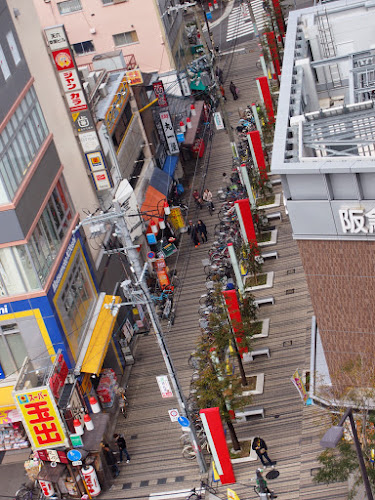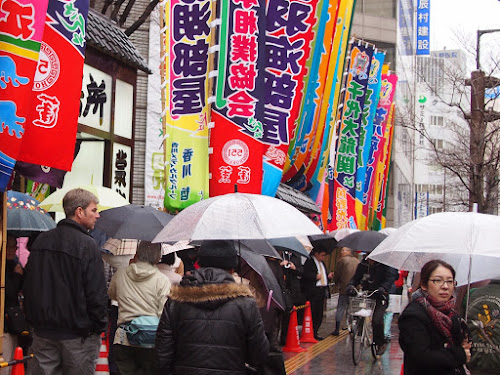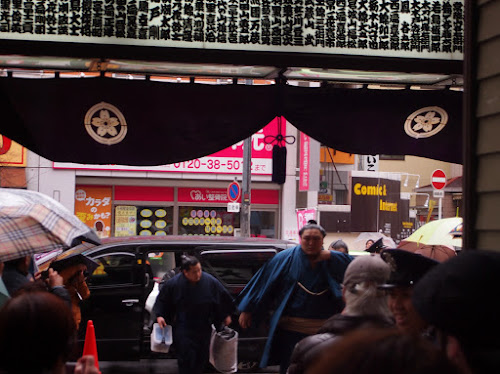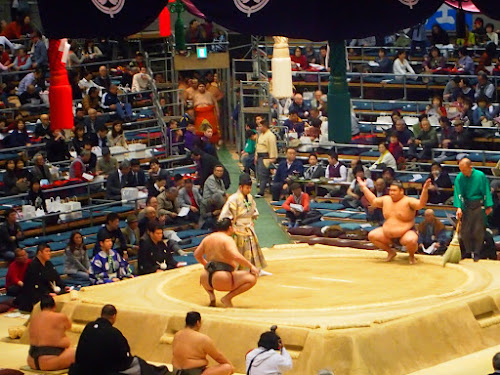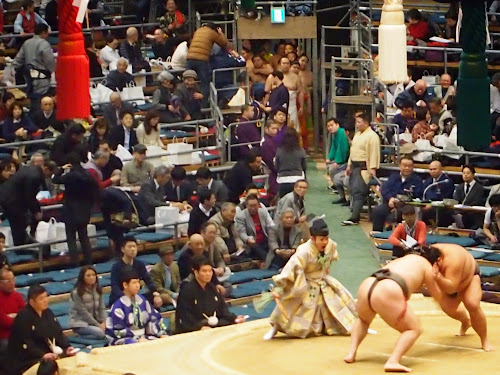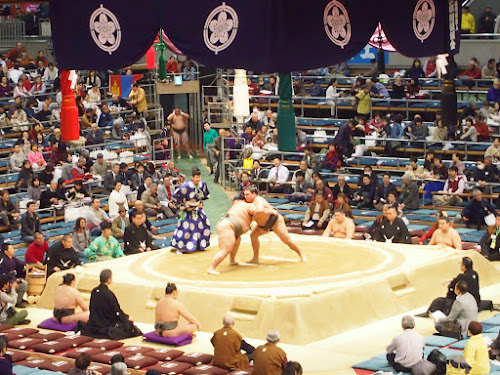Up an elevator in the heart of Japan’s second largest city is a window into the
the streets of 1830s Osaka faithfully recreated inside . . .
While the 21st century remains outside the window, 8 floors down, at the Museum of Housing and Living.
In another part of town…
the crowds await the arrival of the sumo stars.
Sumo has been part of life in Japan for over 1500 years and became part of the ceremonies of the Imperial Court in the 8th century during the Nara Period. The first matches had religious importance and ritual remains an integral part of the sport. The dohyo or sumo ring is treated as a sacred space, women are forbidden from entering. The roof is meant to resemble a Shinto shrine, the four tassels representing the seasons. Here the wrestlers are led out into the dohyo and introduced by the gyoji or referee.
The wresters go through preliminaries. They clap their hands to get the attention of the gods. They throw salt to protect against injury. They slap their bodies and stomp their feet, all in preparation for the bout.
Then it can be over in seconds with an explosive burst of raw energy or the wrestlers may stagger about for a while until one of the wrestlers either touches the ground or is pushed from the ring (sometimes onto spectators seated nearby). After watching it for a while it becomes clear that there is a lot of technique and skill involved, not just massive force from the imposing size of the players. There are no weight classes. As the day progressed, the level of contestants steadily improved. Early in the day, the crowd was sparce and most matches were over in seconds. By the afternoon, the matches became more interesting to watch and by mid-afternoon the sumo stars began to arrive to prepare for the final matches of the day. A number of times it wasn’t clear who won a match. The judges in black kimonos by the side of the dohyo then confer and either decide the winner or order a replay of the match (which we saw only once).



